Potato grows well in almost any climate. It also tolerates acidic soil, but the yield increases significantly after liming. A large amount of moisture and light are, in fact, the only conditions for the growth of potatoes. But even under ideal conditions, the culture is under the threat of infection by fungi, viruses and bacteria. Here we will look at the most basic problems and universal solutions that will help to cope not only with the examples presented, but also to prevent many other similar diseases. Despite the fact that varieties of potatoes are being developed that are resistant to late blight, nematode or scab, diseases and pests still continue to destroy the crop. But there is a weapon for every enemy.
Potato diseases and their control
A large number of various enemies of potatoes significantly reduces the level of the crop. These include not only fungi and insects, but also viruses that infect tubers and inflorescences and prevent normal growth. Because of this, it is very important to carry out many preventive measures before sowing and during cultivation in order to preserve your potatoes. Diseases and pests cause great damage,therefore, it is better to invest and save yourself from worries than to lose half the harvest.
The use of poisons and chemicals reduces the nutritional quality of potatoes, it can become harmful and dangerous not only for beneficial insects, animals and birds, but also for people. Potato diseases and their control require special attention before planting. Let's consider in detail all their types in this material. For a more complete assimilation of information in the article there is a photo of potato diseases, as well as pests that parasitize on tubers.
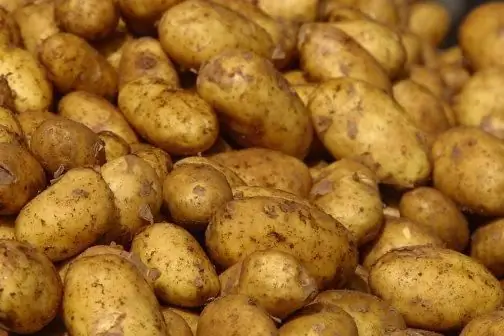
Wireworm
The wireworm is the larva of the click beetle. It is a small gray insect 12-15 mm long. It got its name from the fact that it makes a clicking sound when it rolls over from its back to its paws. One female lays from 50 to 200 eggs in the spring, from which the ill-fated wireworm is born. The larvae can destroy an entire crop, so the first thing you need to do is protect it from the bugs themselves.

Fight against wireworm
There are three ways to deal with this parasite:
- The peeled potato is strung on a stick and buried about 7 centimeters into the ground. It is better to make several of these potatoes to cover a large area. The larvae of the click beetle will gather on it, and in four days it will be possible to dig it out. It will be possible to destroy pests with the help of boiling water or fire.
- When planting potatoes, pour sunflower oil into the ground with finely groundshells from chicken eggs. Such a solution will kill the wireworm before it gets to the potatoes. This method will help the crop not only from the wireworm, many other earthen insects die in such a solution, for example, the bear.
- Two weeks before planting, bury corn kernels in the ground - about 2-3 nests per square meter. The wireworm is attracted not only by potatoes, the larvae will also gather around the grains with pleasure. When the corn germinates, you can dig it up, pick off the larvae and burn them or pour boiling water over them.
Light blight
Late blight (late blight) is not only the cause of tomato crop losses, but also the most common potato diseases, and the fight against them is important for all farmers, regardless of the crop grown. For potatoes, late blight is especially detrimental, since within two weeks it can infect the entire field. Losses reach 70% of the crop. Late blight is spread by fungal spores, allowing it to quickly move underground and infect tubers.
In the first days of the appearance, late blight manifests itself in the darkening of the leaves. Also, a white coating appears on the underside of the sheet. These are the germinating spores of the fungus. They fall down, infecting the roots and fruits of potatoes. A little later, brown spots appear on the tubers.
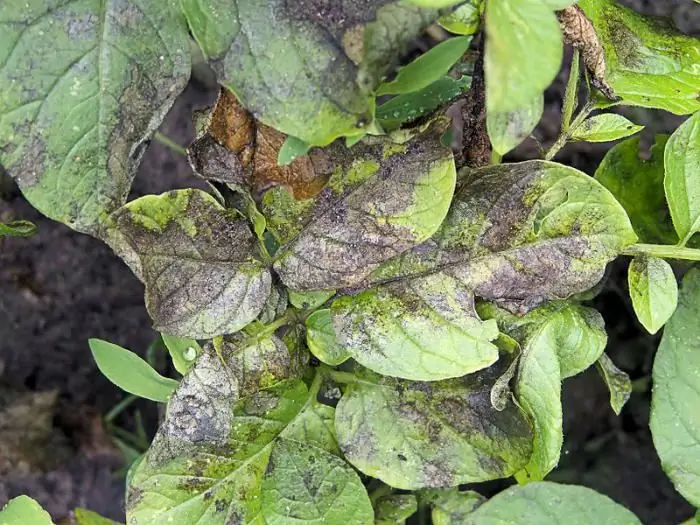
Fight against late blight
Dangerous fungus requires serious complex measures. So, you need:
- Use late blight resistant potato varieties.
- Select he althy tubers for planting.
- Processtubers with fungicides.
- Spud as needed.
- Increase the dose of phosphorus-potassium fertilizer.
- Apply fertilizer containing copper or spray with copper sulfate solution.
- Remove tops before harvesting.
Nematode
The "nematode" disease is not caused by a virus or a bacterium, but by a microscopic worm that parasitizes potatoes. It is easy to check for the presence of a pest: if the bushes wither, and their small leaves are uneven or even pale in color, there is a nematode. The bushes become frail, and the roots are small. In July, small balls (from half a millimeter) with small processes will appear on these roots. These are female nematodes, if they continue to develop, they will turn into cysts that remain in the ground for another 15 years. The cyst contains about 600 worm eggs.
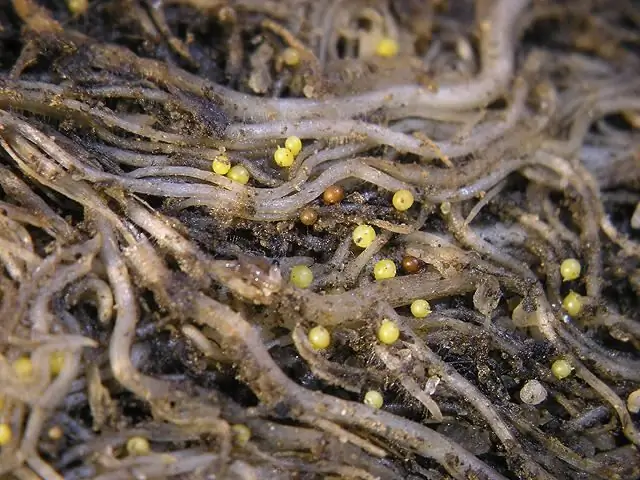
Combating the nematode
After the appearance of the nematode, it is necessary to wait at least 6 years before planting the plot again. However, there are other ways.
Potatoes of an early or nematode-resistant variety are placed in boxes in one layer, sprinkled with peat crumbs and planted after 20 days. After 50 days, the crop is harvested, and the site is thoroughly cleared of tops. The plot itself is sown with legumes or corn. This will clear the soil of the worm by about 70%.
If you sow rye on the plot, this will also significantly reduce the parasite population.
It is worth noting that potatoes attract the nematode more than other plants.
Scab
The mostcommon after late blight disease of potatoes - scab. It degrades the quality, presentation of tubers and reduces the level of starch in them by almost 30%. Yields are almost halved. During storage, infected tubers are very susceptible to rot.
The causative agent of scab is a mold - a radiant fungus. It penetrates into potatoes through lenticels and mechanical damage, forming ulcers on the surface, which merge together and form cork tissue. A white coating appears on the tubers - the mycelium of the radiant fungus. When dried, they disappear, and the pulp almost does not change.
There are five types of defeat:
- Flat. Affects the skin of young tubers, causing the skin to harden.
- Mesh. Covers tubers with multiple mesh grooves.
- Convex. Appears in the form of depressions, which later become covered with growths.
- Deep. Deep ulcers of various shapes, surrounded by ruptures of the peel. Noticeable when harvesting potatoes.
- Convex-deep. The combination of two types of damage. Growths with deep ulcers and breaks in the skin.
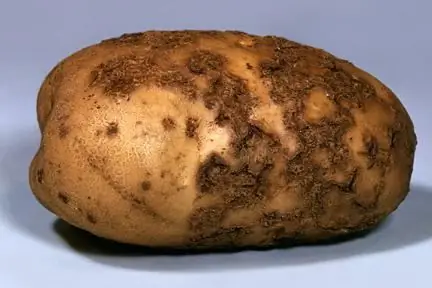
Scab pathogens persist in the ground for several years. They are not affected by negative climatic factors, they persist even in drought and at a temperature of -30 ° C. Hot and dry weather during flowering only encourages infection.
The source of infection is always the soil. Tubers cannot infect each other, so they can be stored together.
Fighting scab
The scab is not easy to spot right away, soit is impossible to save an already infected potato. Diseases and pests of other types at least "warn" about their appearance, but it is better to deal with all in advance using the following procedures:
- Compliance with crop rotation.
- Growing green manure crops on the site.
- Using he althy fruits for sowing.
- Using acidic fertilizers.
- Careful preparation.
- Use resistant varieties.
- Regular watering during the growing season.
Alternariosis
The disease has spread everywhere where potatoes are grown. Diseases and treatment of nightshade plants are still being studied more in the southern regions, since in the south there are ideal conditions for the growth and spread of fungi that tolerate Alternaria.
Depending on the period, the disease may manifest itself in different ways. Infection begins after rain or heavy dew. The spores of the fungus fall into cracks, mechanical damage or natural depressions. Acid begins to be released, from which the stems rot and die. At low temperatures, the development is insignificant, but in hot weather the disease has a dangerous effect on the crop. Incubation lasts up to a week.
The first signs are visible on small plants, up to 20 cm high. Later, dark brown spots appear on the leaves. Under good conditions for development, they can be seen already on the third day. A little later, smoky-gray conidia appear. Damaged plant parts are fragile and soft.
Squeezed out dark spots of rot appear on the tubers, sometimes even with wrinkles. Ultimately the tubersbegin to rot completely, drying up and turning black.
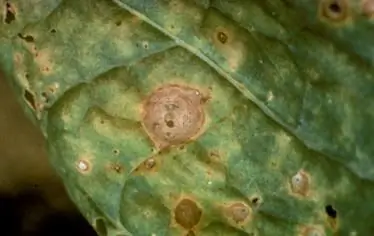
Fight against Alternariosis
In the southern regions, potato diseases and their control require special attention. There are three ways to protect the harvest:
- Agrotechnical. Use only he althy, disease-resistant planting material, observe crop rotation, and remember that early potato varieties are most susceptible to infection. Seed material must be heated for the first two weeks at temperatures up to 20 ° C. During storage, make sure that there are no diseased tubers. Alternaria can be transmitted from one fetus to another. Remove the tops in a timely manner, it is better to carry out desiccation using special tools.
- Biological. Spray tubers before planting with Integral, Bactofit or Planriz.
- Chemical. Preparations "Ridomil Gold We", "VDG" and "Bravo" will save you from all existing mushrooms, depriving them of comfortable conditions. Before planting, you can also spray potatoes with a solution of the fungicide "Maxim".
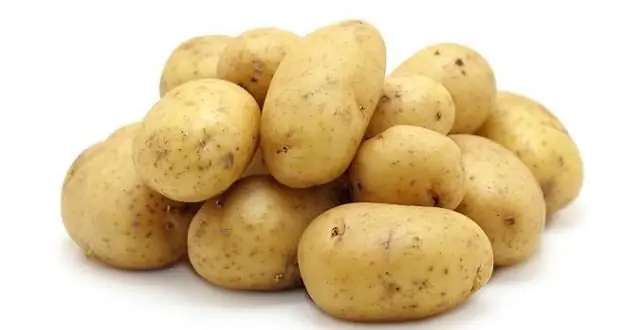
Potato diseases and their control, as well as other pests, always require special attention. The harvest directly depends on how well all requirements are met. It is not in vain that the article also contains photos of potato diseases, because you need to know the enemy in person.






